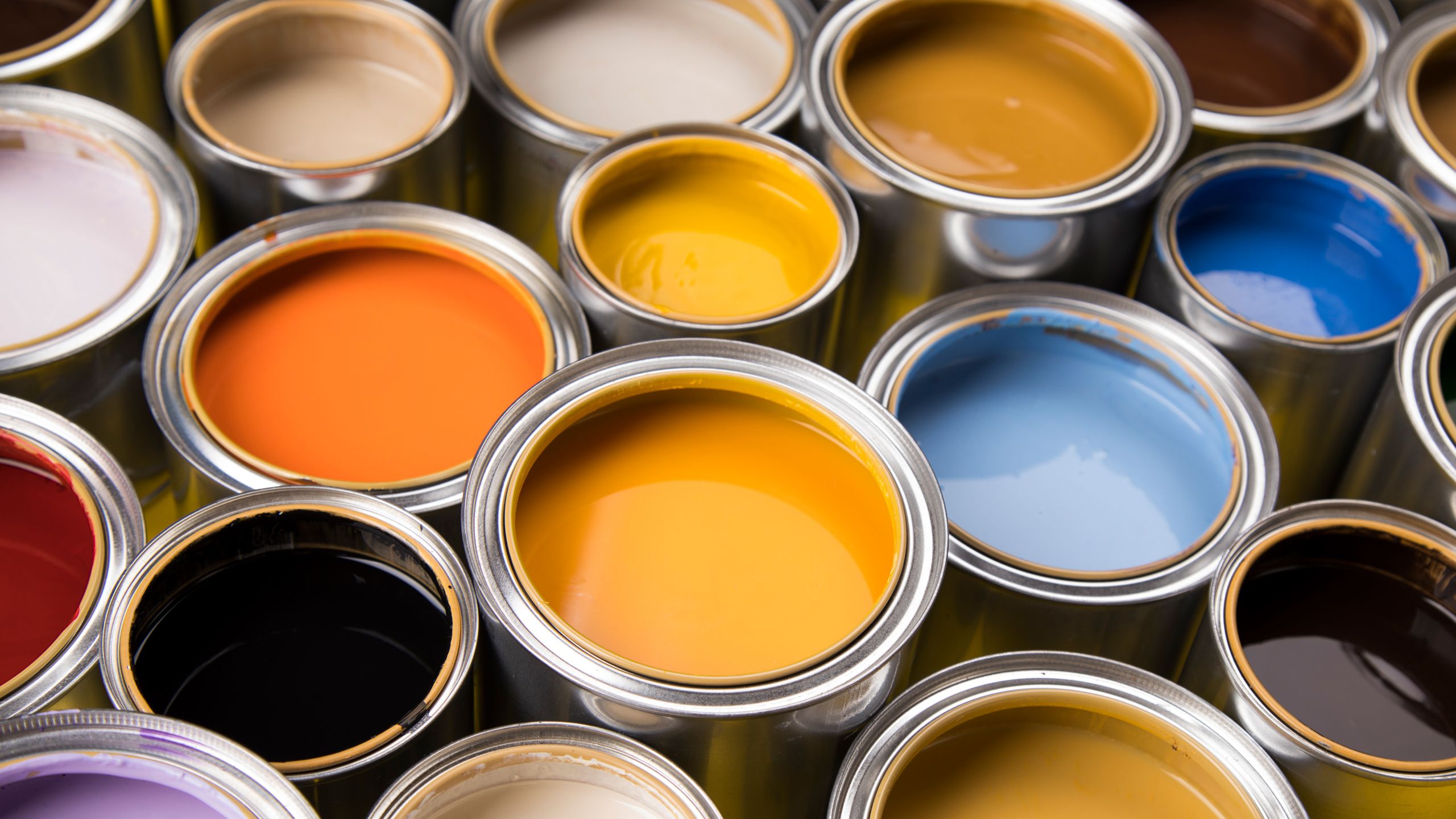Improving paint industry circularity
From waste paint to new paint opacifiers

Improving paint industry circularity
From waste paint to new paint opacifiers
The Paint Research Association (PRA World) have developed a novel process to recover an estimated 19m litres of 'unusable' waste waterborne paint, allowing it to be recycled as premium grade, quality-controlled paint additive.
The use of waste paint has been identified as a key way to reduce the industry's carbon footprint. However, current options for redirecting this from landfill or incineration into remanufacture and re-use are limited for recycling centres, primarily due to the poor perception of leftover paint, which is considered to be of inferior quality to new products.
Focusing on this demand for a solution to the waste problem and building on the research and roadmap from the Royal Society of Chemistry and previous research work by PRA World, the project focuses on the extraction and re-use of the liquid polymers within used paint and more extensive recycling of the plastics within the products too.
Backed by Innovate UK's Transforming Foundation Industries (TFI) challenge programme, this industrial research project aims to create and test a chemical process of polymer extraction by adding a solvent to dried waste paint before mixing, reaction and removal. The project hopes this method will help reduce paint as plastic waste from the household waste stream and significantly contribute to the industry's potential for a more circular economy. This recycling option will deliver the benefits of a reduced carbon footprint for the paint industry and reduced paint waste.
"Over a million litres of waste paint are generated in the UK each week, and much of this still goes to landfill or incineration," says Andy Jones, Director of Operations at PRA World. "We therefore wanted to make re-use and remanufacture more viable. A big part of this is simply addressing what is currently too contaminated or degraded to be restored as usable paint under current industry methods. Finding salvageable value in these products and helping reduce water pollution from their disposal are substantial aims for the sector to overcome."

"Creating a circular economy for paint has significant benefits that can dramatically reduce waste, so unlocking this with novel re-use techniques can change the game for the industry."

The project intended to test and demonstrate the process at a proof-of-concept stage. This included optimising variable components such as the solvent types, cross-linking technologies, and the parameters of the emulsification stage. "The concept itself has real potential, so it was all about finding the right combination of elements to find the best results," adds Andy. "This is a difficult science to untangle the elements within the paint product, but progress can have a huge impact. Our four-step process from paint solution to polymer particle extraction has the potential for 90% removal."
The results of the project illustrated this progress, with the testing of several cross-linking technologies undertaken and solutions showing success in reactions – although with the need for greater stability within the emulsions created throughout. With each step, further opportunities for future testing, improvement and review have been identified. Beyond the tests themselves, the project also completed a lifecycle analysis comparing virgin and re-used materials and products, as well as longer-term outcomes and environmental benefits against landfill and incineration routes.
"There's real interest from the industry in the initial results and the future potential," Andy believes. "For the process to be truly effective, there also needs to be a step change in the availability of collection facilities and transportation to create an ecosystem that encourages recycling and re-use. Creating this demand and supply, as well as engagement from stakeholders like recycling centres and DIY stores for example, is an important next step."
The project partners are now reviewing potential follow-on opportunities, including additional processing improvements and steps to pursue further funding to continue research and development of the techniques. Further research is also planned with Paintcare UK around the potential landscape and scale of waste paint collection points in key areas.

The project intended to test and demonstrate the process at a proof-of-concept stage. This included optimising variable components such as the solvent types, cross-linking technologies, and the parameters of the emulsification stage. "The concept itself has real potential, so it was all about finding the right combination of elements to find the best results," adds Andy. "This is a difficult science to untangle the elements within the paint product, but progress can have a huge impact. Our four-step process from paint solution to polymer particle extraction has the potential for 90% removal."
The results of the project illustrated this progress, with the testing of several cross-linking technologies undertaken and solutions showing success in reactions – although with the need for greater stability within the emulsions created throughout. With each step, further opportunities for future testing, improvement and review have been identified. Beyond the tests themselves, the project also completed a lifecycle analysis comparing virgin and re-used materials and products, as well as longer-term outcomes and environmental benefits against landfill and incineration routes.
"There's real interest from the industry in the initial results and the future potential," Andy believes. "For the process to be truly effective, there also needs to be a step change in the availability of collection facilities and transportation to create an ecosystem that encourages recycling and re-use. Creating this demand and supply, as well as engagement from stakeholders like recycling centres and DIY stores for example, is an important next step."
The project partners are now reviewing potential follow-on opportunities, including additional processing improvements and steps to pursue further funding to continue research and development of the techniques. Further research is also planned with Paintcare UK around the potential landscape and scale of waste paint collection points in key areas.
